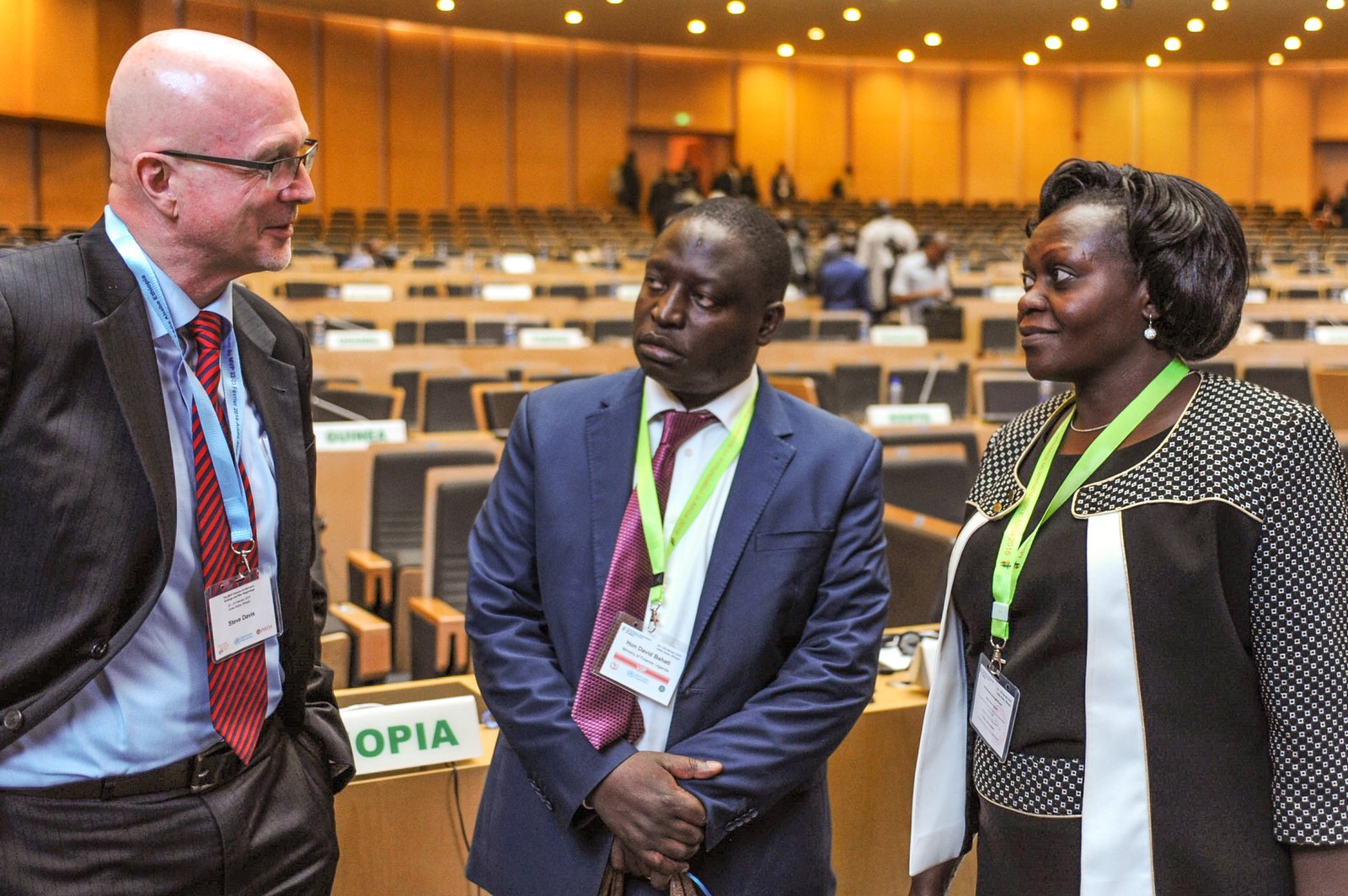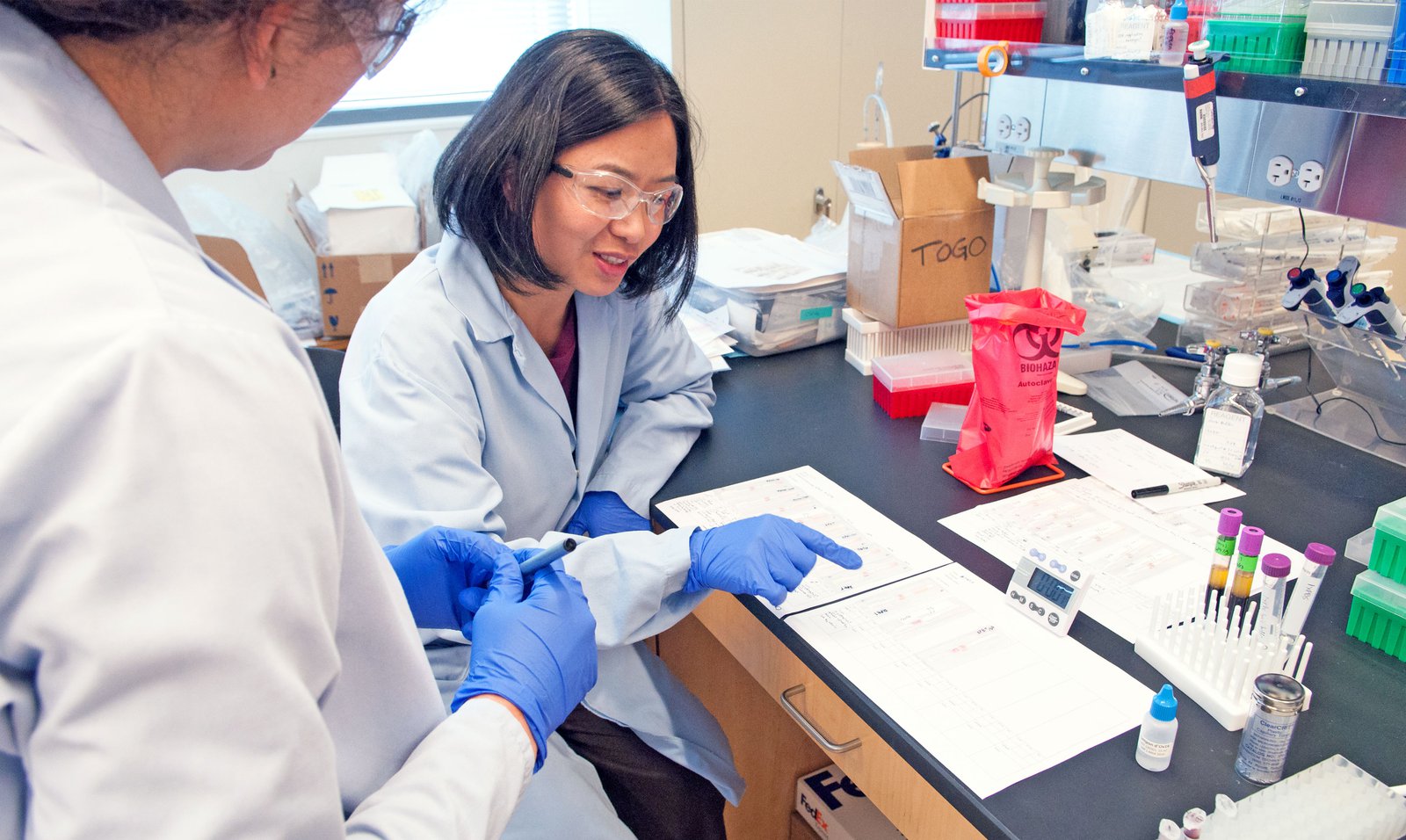Forty years ago, three researchers in Seattle decided to launch an innovative, international nonprofit called PIACT, or the Program for the Introduction and Adaptation of Contraceptive Technology. Gordon Perkin, Richard Mahoney, and Gordon Duncan wanted to combine their scientific expertise with resources from companies, governments, foundations, universities, and community groups. Public-private business partnerships are considered essential in global health today, but 40 years ago, they were seen as revolutionary. Despite many challenges with this pioneering model, Perkin, Mahoney, and Duncan stuck to their guns. Ultimately, they hoped to improve health and well-being in the world’s poorest communities; they believed that people everywhere should benefit equally from new health innovations.
Their earliest project involved improving access to birth control in China by working with Chinese contraceptive manufacturers to implement updated technology and equipment. Their innovative public-private-sector approach to this problem eventually proved successful: Over the next 15 years, PATH played a pivotal role in providing millions of Chinese women with access to life-changing family planning options. In 1980, the organization changed its name to Program for Appropriate Technology in Health. Several decades later, we dropped the acronym and became PATH. Eventually, PATH helped to transform Chinese contraceptive operations into the beginnings of a modern medical technology industry.

So much has changed in the four decades since PATH got its start. What was once a tiny nonprofit fueled mostly by passionate belief is now a world leader in global health innovation. Today, PATH’s 1,600 employees work in more than 70 countries to address the full range of major global health challenges—from malaria to tuberculosis, diabetes, and neglected tropical diseases. But what hasn’t changed is PATH’s innovative end-to-end approach to global health: we develop and introduce new products—vaccines, drugs, diagnostics, and tools—and we also work on systemic and service-oriented challenges in communities across the globe—like digital health, advocacy, and community health. This expansive approach links need and demand with supply and innovation. And while we spend a lot of time developing, testing, and introducing innovations across global health, we’re also focused on scaling these solutions so they reach millions of people. Every year, our lifesaving innovations reach more than 150 million people.
The global health world has also changed in remarkable—even unprecedented—ways since PATH got its start. Forty years ago, one child in eight died before the age of five years; now it’s less than 1 in 20. Maternal mortality has also been cut in half, and the percentage of people who live on less than $2 a day has fallen from more than one-third to below 10 percent. Hundreds of millions of people have risen out of poverty to join their country’s burgeoning middle class in the past 40 years. We’re even within a few cases of eradicating polio, a disease that once afflicted hundreds of thousands of people every year.
The truth is that there has never been a time of better health in all of human history. What once seemed unimaginable—a world of thriving communities where everyone has a path to good health—is now within reach. As extreme poverty has receded, we’ve seen the emergence of middle-income countries around the globe that have the resources and institutions to chart their own paths forward. Disruptive digital and life-science technologies give us new ways to understand the underlying causes of poor health and deliver breakthrough solutions. The burden of disease around the globe is better understood and changing rapidly. Noncommunicable illnesses such as heart disease, diabetes, and cancer are becoming major killers everywhere. Current political environments and financing models are rapidly making our work both more relevant and more difficult to achieve.
In this changing environment, PATH and other NGOs must change too. But where does affordable, scalable innovation come from? In a world where political and economic powers are being rebalanced, what is the role of a large, mission-driven enterprise? What new processes, new tools, new systems, new partners, and new business models will enable large NGOs to continue to improve health and move humanity forward?
Five years ago, PATH launched a comprehensive initiative to answer these questions. We examined every aspect of our organization and our work with the same rigorous, evidence-based approach that is the foundation for everything we do. We asked ourselves tough questions about our mission and purpose, how and where we provide the greatest value, and what our most effective role is in creating partnerships and developing and delivering solutions.
Throughout this process, we identified what makes PATH unique and where our greatest opportunities lie. We charted a path toward a future of equity, meaning, and empowerment for all of society, building on the great work and legacy of our colleagues over the last 40 years. And then we embarked on our own journey of change and transformation. It’s a journey that is taking us beyond the model we pioneered 40 years ago.
This month, we announced a full-scale rebrand. This means we are putting an even bigger stake in the ground. We’re recommitting not only to furthering our mission of tackling health inequities in more powerful ways, but we’re also recommitting to being a leading, valuable, relevant, and global social enterprise in the 21st century.
What does this mean?

1. More value to customers and audiences
PATH’s transformation from a small health nonprofit into a global social enterprise means thinking about who our true customers and audiences are and how we can best provide value to them—whether through our voice, our expertise, or our partnerships.
After a lot of research during our rebrand, we decided that PATH’s key customers are the countries we serve. In today’s world, the most important drivers of change are national leaders who recognize that the key to building stronger societies and thriving economies is improving their country’s health care systems, both public and private. As PATH grows, we’ll focus more than ever on the people leading their countries’ ministries of health, technology, and finance; running their countries’ most vibrant companies; and heading their countries’ most effective nonprofits. They know best how to forge the path forward for their citizens, and we want to support their work.
This is why we have offices in 20 countries to support the work we do in 70 nations—and why 95 percent of PATH employees are citizens of the countries in which they work. We’ll continue to hire the world’s leading scientists, engineers, policy experts, educators, entrepreneurs, and doctors—most of whom are Africans and Asians working in their own countries to find solutions. And going forward, we’ll continue to fill the role of trusted advisor and partner to governments, institutions, companies, and investors focused on improving the world’s greatest health inequities. We want to serve as the catalyst for partnerships across all sectors to accelerate results.

2. Agile innovation platforms to address big problems
As a global social enterprise, innovation continues to be the essence of everything we do. It is central to our strategy, our mission, and our value. But our understanding of what constitutes innovation and how it can change people’s lives is becoming more expansive and, I believe, more powerful than ever.
Of course, we will continue to pursue innovations in prevention and treatment, just as we’ve always done—new drugs, new vaccines, new diagnostics, and new tools. But we also see unrealized value in systemic innovations that will make prevention and treatment more affordable, more accessible, and more effective. PATH’s transformation also means recognizing the critical importance of investigating innovative financial models that can create new ways for individuals and businesses to invest in tackling the world’s health challenges.
How we achieve innovation within PATH is changing, too. Instead of using the standard project-based model, we’re implementing a platform-based approach. This will bring together expertise and capabilities from PATH teams across many disciplines in many countries, just like our founders did all those years ago. It will help us match the best talent and approach to each opportunity we address.
We’re already seeing the power of this multidisciplinary approach through PATH’s Center for Vaccine Innovation and Access (CVIA), which spans every stage of vaccine research, development, and introduction. Within CVIA, we’ve collaborated with manufacturers to accelerate development and make vaccines affordable, with clinical researchers to evaluate vaccine candidates, and with regulators to secure vaccine approvals. Today, CVIA’s portfolio includes more than two dozen vaccine projects with an emphasis on the leading infectious causes of childhood deaths, including pneumonia, diarrheal diseases, and malaria.
We look forward to tackling other global health challenges in more robust, “big bet” ways, too. Already we’ve created a Center for Malaria Control and Elimination, bringing together a full platform of capabilities and talent across many elements in the fight against malaria, which is one of the biggest killer diseases of children in Africa and Asia. And we are working hard on strategies that could move us toward the elimination of this disease altogether.
Finally, our focus on innovation will pay special attention to the promise of digital health and data. We believe that digital health will change the way health needs are identified, treated, and understood around the globe. Thus far, we have focused our efforts on a leading suite of services and products that deploy new data analytics and digital tools for eliminating malaria, strengthening health systems, and responding to emerging epidemics. As part of this rebrand, we’ve also committed to our own internal digital transformation.

3. New partnerships inside and out
Underlying all this change at PATH over the past five years is an emphasis on breaking down barriers between people within our organization and our partner companies and organizations. We want collaboration to happen by design and hope that knowledge will be shared by default.
Recently, we’ve focused on a number of strategic corporate partnerships that move beyond a transactional approach into a more strategic and enduring model; this will allow us to think together with these partners about trends, opportunities, and new projects. We’ve also built new relationships with hundreds of new donors committed to our mission. We’ve greatly strengthened our advocacy capabilities so that we are influencing policy on health innovation at national and global tables. Internally, we’ve made great strides in improving how we run the business side of our operations—how we manage finances, work with donors, form strategic relationships with partners, and recruit and retain great employees. We are committed to being an institution that provides strong stewardship and great value to the donors and partners that support us.

Where do we go from here?
As an organization, we are more unified and more deeply committed than ever to unleashing the power of innovation to improve health. With this, we are excited to introduce our new brand.
I know some people will see this as simply a new logo or a new website, but I see it as something more—a statement from PATH’s 1,600 amazing, dedicated colleagues around the world who come together every day. Our new brand is both a logical result of the transformation of the past five years and a sign of our commitment to move forward together toward the common goal of global health equity. By letting the world know who we are and what we do in a sharper way, our new brand will help us mobilize more resources, forge new partnerships, and improve health for more people.
I hope you’ll join us on our journey to create a world of greater health, equity, and opportunity. Your support is essential to our success.
About the author: Steve Davis, PATH’s president and CEO, isn’t a typical NGO leader. He started his career as a human rights lawyer, then became an internet pioneer. He was CEO of Corbis, a global digital media firm, and led the social innovation practice at McKinsey & Company. He is a lecturer at the Stanford Graduate School of Business and was one of the first openly gay business leaders in Seattle. After serving nine years on the PATH board, Steve became its CEO. He has been leading the organization’s growth and transformation since 2012.



